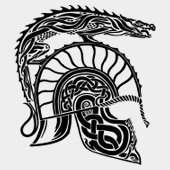-
Numero contenuti
18.143 -
Iscritto
-
Ultima visita
-
Giorni con più "mi piace"
3
Tipo di contenuto
Profili
Forum
Calendario
Tutti i contenuti di Mormegil
-

In difesa del mister - Parliamo di calcio
Mormegil ha risposto a BW4ever Discussione Archivio discussioni Vecchiasignora.com
Incredibile non aver ancora capito che Allegri è sempre stato questo. -

ATP e WTA - il topic del TENNIS maschile e femminile
Mormegil ha risposto a mercimichel Discussione Altri Sport
Lascia un vuoto incolmabile. -

UEFA Champions League Quiz 2022/23 - 10ª edizione
Mormegil ha risposto a Mormegil Discussione Serie A e Campionati Esteri
Sistemato- 158 risposte
-
- 1
-

-
- uefa
- pronostici
-
(e 3 ancora)
Taggato come:
-

UEFA Champions League Quiz 2022/23 - 10ª edizione
Mormegil ha risposto a Mormegil Discussione Serie A e Campionati Esteri
Certo.- 158 risposte
-
- 1
-

-
- uefa
- pronostici
-
(e 3 ancora)
Taggato come:
-

UEFA Champions League Quiz 2022/23 - 10ª edizione
Mormegil ha risposto a Mormegil Discussione Serie A e Campionati Esteri
3ª GIORNATA- 158 risposte
-
- 1
-

-
- uefa
- pronostici
-
(e 3 ancora)
Taggato come:
-

UEFA Champions League Quiz 2022/23 - 10ª edizione
Mormegil ha risposto a Mormegil Discussione Serie A e Campionati Esteri
Classifica generale Briooo 120 LiamBrady10 115 Leevancleef 110 sfonda 110 Manfred Von Richthofen 110 peppetermoli 105 The Answ3r 105 sergiodirio 105 bestiale 105 The Huge 105 ilfranz 100 Costanzo 100 Davide_Casale 100 beppi 95 beorht 95 Troy McClure 90 doctor89 80 Mormegil 85 jolly88 55- 158 risposte
-
- 2
-

-
- uefa
- pronostici
-
(e 3 ancora)
Taggato come:
-

UEFA Champions League Quiz 2022/23 - 10ª edizione
Mormegil ha risposto a Mormegil Discussione Serie A e Campionati Esteri
Classifica 2ª giornata peppetermoli 55 The Answ3r 55 Leevancleef 55 sfonda 55 sergiodirio 50 Manfred Von Richthofen 50 Briooo 45 ilfranz 45 LiamBrady10 45 beppi 45 beorht 45 bestiale 45 The Huge 40 Costanzo 40 Davide_Casale 40 Troy McClure 35 Mormegil 20 Qui potete controllare risposte e punteggi: https://docs.google.com/spreadsheets/d/1RCr5XcbKvywyW_IauDaayOExcjf7zxt8VyAYjNz9hc0/edit?usp=sharing- 158 risposte
-
- 2
-

-

-
- uefa
- pronostici
-
(e 3 ancora)
Taggato come:
-
Che occasione abbiamo sprecato.....
- 1.240 risposte
-
- serie a
- legabasket
-
(e 2 ancora)
Taggato come:
-
È morto Godard. Un gigante.
-

Lord of the Rings-The Rings of Power, serie Amazon
Mormegil ha risposto a Doktor Flake Discussione Cinema & TV
Viste le prime due puntate. Sono un tolkeniano di ferro, ma di congruenze e stravolgimenti me ne frega quasi nulla, a patto che non si sconfini in soluzioni strampalate. Detto ciò, per ora serie didascalica, stereotipata e piatta da morire. Non basta qualche bella ricostruzione in CGI per destare il mio interesse. Comunque, non getto già la spugna, e continuerò a seguire. -

UEFA Champions League Quiz 2022/23 - 10ª edizione
Mormegil ha risposto a Mormegil Discussione Serie A e Campionati Esteri
2ª GIORNATA- 158 risposte
-
- 1
-

-
- uefa
- pronostici
-
(e 3 ancora)
Taggato come:
-

UEFA Champions League Quiz 2022/23 - 10ª edizione
Mormegil ha risposto a Mormegil Discussione Serie A e Campionati Esteri
Classifica 1ª giornata e generale doctor89 80 Briooo 75 The Huge 65 LiamBrady10 65 Mormegil 65 peppetermoli 60 Davide_Casale 60 sfonda 60 Costanzo 60 Manfred Von Richthofen 60 bestiale 60 ilfranz 55 Troy McClure 55 sergiodirio 55 jolly88 55 Leevancleef 55 beppi 50 The Answ3r 50 beorht 50 Qui potete controllare risposte e punteggi: https://docs.google.com/spreadsheets/d/1TaJRROmxZIFMcskf8QNw_2CLfzx8m74KMozjIsTnBSY/edit?usp=sharing- 158 risposte
-
- 2
-

-
- uefa
- pronostici
-
(e 3 ancora)
Taggato come:
-

ATP e WTA - il topic del TENNIS maschile e femminile
Mormegil ha risposto a mercimichel Discussione Altri Sport
Peccato, ma Sinner ha ancora margini di miglioramento. -
Non mi piace la disposizione dei fantasmini. Sembra un fiore, o una roba da trip psichedelico.
- 633 risposte
-
- maglie juve 2022/23
- kit
- (e 4 ancora)
-
Esatto, infatti quel "dovrebbe" su Kostic mi lascia dubbioso
- 865 risposte
-
McKennie - Locatelli - Rabiot Cuadrado - Vlahovic - Kostic Qualità media bassina, ma sarebbe anche una disposizione razionale. Il problema è che saremo schiacciati bassi e molto perimetrali nello scaglionamento e dunque nella circolazione, con due esterni che non sanno entrare dentro il campo (infatti non giocano a piede invertito). L'unico che andrà a giostrare fra le linee e nel mezzo-spazio di competenza sarà McKennie, cioè un giocatore con forti limiti tecnici e pressoché nulle capacità di rifinitura, ma bravo nel tempo d'inserimento e nella conclusione a rete, soprattutto volante. Se ci aggiungiamo che Vlahovic risulterà spesso isolato, il piano gara è cristallino: crossoni su crossoni + "occupazione dell'area".
- 865 risposte
-
Non ha senso. Tutto quel che piace va comprato? Non si possono esprimere giudizi estetici disinteressati?
- 633 risposte
-
- 1
-

-
- maglie juve 2022/23
- kit
- (e 4 ancora)
-

ATP e WTA - il topic del TENNIS maschile e femminile
Mormegil ha risposto a mercimichel Discussione Altri Sport
La partita, meravigliosa; Musetti, entusiasmante. -

ATP e WTA - il topic del TENNIS maschile e femminile
Mormegil ha risposto a mercimichel Discussione Altri Sport
-

(Video) L' abbraccio dei tifosi bianconeri a Pogba arrivato al J-Medical
Mormegil ha risposto a ufobianconero Discussione Video Juventus, PuntoJ: la zona erogena del tifoso juventino
Non avresti mai dovuto andartene. -

ATP e WTA - il topic del TENNIS maschile e femminile
Mormegil ha risposto a mercimichel Discussione Altri Sport
Nole gioca al gatto col topo pure oggi -

ATP e WTA - il topic del TENNIS maschile e femminile
Mormegil ha risposto a mercimichel Discussione Altri Sport
Ops, non gioca -

ATP e WTA - il topic del TENNIS maschile e femminile
Mormegil ha risposto a mercimichel Discussione Altri Sport
La russ... ehm, kazaka Rybakina in finale

